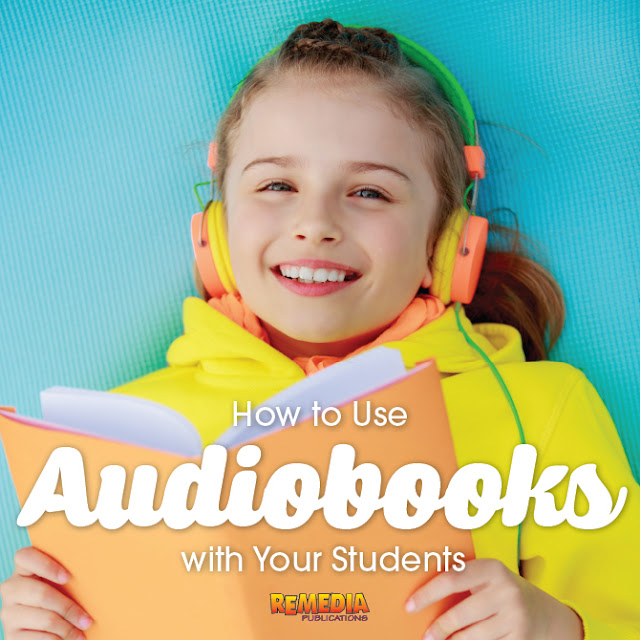- a breath is taken at the end of a sentence
- the natural pause after a comma sounds
- questions and exclamations should sound
- to pronounce new vocabulary words
Implement audiobooks in your classroom with the below tips and you’ll see your students’ fluency, comprehension, language, and listening skills improve.
Adult-Created Audio
If you can’t find a specific book on audio, you or a parent volunteer can create your own books on cassette/CD by recording yourself reading. Add 15-20 seconds of music at the beginning of the recording so students can adjust the volume and get their book ready. Don’t forget to read the title and author’s name.Student-Created Audio
Student-created audio will be less hi-tech, yet more rewarding for the student reader. Choose a student who is either an excellent reader (fast-finisher) or a struggling reader. Have the student practice reading a book, first. Once he/she has perfected their reading, they can record themselves reading the book. This exercise is a great way to give struggling readers extra practice reading that they won’t dread since they will feel that they have a purpose and a goal. Plus, you will be giving them an extra boost of confidence because you have entrusted them with this very important task. Once they have finished, make sure they listen to their audio, write their name and the book's title on the cassette/CD, and add it to your growing collection.Professionally Recorded Audio
This is the easiest way to quickly implement audiobooks in your classroom, simply download and play! Professionally recorded audiobooks will often have fun sound effects, page turn sounds, and have actors who read the stories using unique voices for each character and know how to give sentences inflection to show emotion. Check out Remedia’s high-quality read-along audiobooks here.Reading Wand
For students who have a hard time following along as a story is read aloud, cut yellow (or any color) translucent paper into 1” squares. Glue each square to the top of a popsicle stick. Have students highlight each word as they follow along with the audio. You can even use the “reading wand” as a listening/reading game, by asking students to highlight the character’s name or to find a verb on the page.Extra Tips!
- Add stickers to your playing devices to help students know which buttons to push--a green sticker on the play button and a red sticker on the stop.- Listening centers should be both comfortable and functional. Have some pillows and stuffed animals, but also make sure there are clipboards, pencils, and paper so students can write, draw, and take notes.
- Check out our Pinterest board for more links and tips for using audio!

